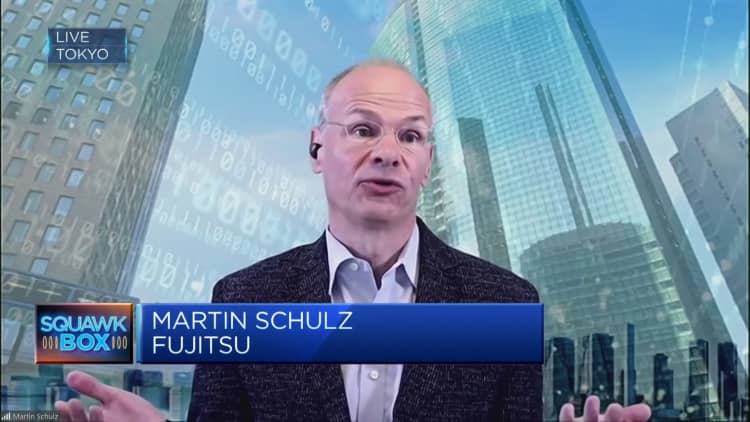
Tokyo Skytree and Mount Fuji are seen from the I-link Town observatory in Ichikawa city, Chiba prefecture, east of Tokyo on July 2, 2023.
Philip Fong | Afp | Getty Images
Japan’s economy posted its third straight quarterly expansion, provisional government data showed Tuesday, as robust export growth contributed to an annualized 6% expansion in the second quarter, handily beating market expectations.
Economist surveyed by Reuters had expected the world’s third-largest economy to post 3.1% growth in the April-June quarter. The impressive gross domestic product data translated to a more modest quarterly expansion of 1.5%, topping expectations for 0.8% growth.
The benchmark Nikkei 225 index extended gains slightly to trade up nearly 1%, while the Japanese yen pared losses against the U.S. dollar and Japanese government bonds across the various tenures were broadly unchanged.
Tuesday’s GDP print followed an annualized 2.7% growth in the first quarter, pointing to a continued post-Covid recovery for Japan’s economy. Still, the narrower gap between reality and expectation in quarter-on-quarter growth tempers any longer-term optimism.

“Japan’s economy expanded at an extremely rapid pace last quarter, but we expect a renewed slowdown across the second half of the year,” Marcel Thieliant, head of Asia-Pacific at Capital Economics, wrote in a note.
“However, the details of the report weren’t as impressive as the headline,” he added. “Instead, nearly all of the increase in output was driven by a 1.8%-pts boost from net trade. That marked the second-largest contribution from net trade in the 28-year history of the current GDP series, with only the bounce back in exports from the first lockdown at the beginning of the pandemic providing a larger boost.”
Exports rebounded 3.2% from the previous quarter — largely driven by the spike in car shipments — while imports plunged 4.3% over the time period.
Other details beyond the rosy headline GDP growth figure suggest the Bank of Japan is likely to revert from its ultra-easy monetary posture.
A surprise 0.5% annualized drop in private consumption expenditure, along with flat capital expenditure pointing to muted domestic demand despite the first employee compensation sequential increase in seven quarters.
This comes as inflation has exceeded the BOJ’s 2% target for 15 consecutive months. In July, the Japanese central bank loosened its yield curve control over the 10-year Japanese government bond in a modification it says was intended to make its ultra-easy monetary position more sustainable.
